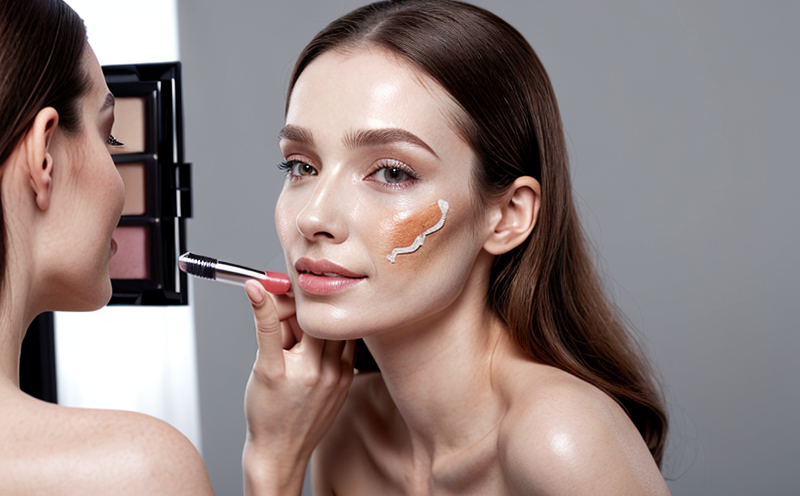Dermatological Safety Testing of AHA/BHA Cosmetics
The dermatological safety testing of Alpha-Hydroxy Acids (AHA) and Beta-Hydroxy Acids (BHA) is a critical step in the development, quality assurance, and regulatory compliance processes for cosmetic products. AHAs and BHAs are commonly used ingredients in skincare and body care products due to their exfoliating properties and ability to penetrate into the skin. Proper testing ensures that these powerful acids do not cause adverse effects when applied to sensitive or compromised skin.
Given the acidic nature of AHAs and BHAs, it is essential to assess their potential for irritation, sensitization, and comedogenicity—qualities that can lead to acne formation. The testing process involves a series of in vitro tests using standardized methods and international standards such as ISO 10993-11:2017 for skin irritation tests.
The primary aim is to identify any potential risks associated with the use of AHAs and BHAs, ensuring that products are safe for consumers. This includes evaluating the acid’s pH level, its ability to penetrate into the skin layers, and how it interacts with the skin barrier. Understanding these interactions helps in formulating products that not only deliver efficacy but also maintain safety.
Testing is conducted on healthy human skin or reconstructed skin models, which closely mimic the human dermal environment. This approach allows for accurate assessment of the product’s potential impact without exposing actual subjects to unnecessary risk. By using advanced techniques like confocal microscopy and spectrophotometry, detailed insights into the skin's response are obtained.
The testing process typically involves multiple stages:
- Initial pH measurement
- Skin irritation tests (ISO 10993-11)
- Comeodogenicity testing
- Sensitization potential assessment
These stages are crucial in ensuring that the product meets regulatory requirements and is suitable for consumer use. Regulatory bodies such as the European Union, United States Food and Drug Administration (FDA), and the Personal Care Products Council have stringent guidelines regarding the safety of AHAs and BHAs.
The results from these tests provide comprehensive data on how the product behaves under various conditions, aiding in the development of safer cosmetics that meet both efficacy and safety standards. The testing process also helps manufacturers to identify any potential issues early in the development stage, allowing for necessary adjustments before the product reaches the market.
Applied Standards
| Standard | Description |
|---|---|
| ISO 10993-11:2017 | Guidelines for the in vitro skin irritation tests. |
| ASTM E1175-20 | Standard test method for determining comedogenicity of cosmetic ingredients. |
| IEC 62345:2019 | International standard for safety and performance requirements of personal care products. |
The application of these standards ensures that the testing conducted is consistent with international best practices, providing reliable data that can be used by regulatory bodies and industry professionals alike. Compliance with these standards is crucial for product safety and efficacy, ensuring that cosmetics are not only effective but also safe for consumers.
Customer Impact and Satisfaction
- Enhanced consumer trust in the brand’s commitment to quality and safety.
- Increased product acceptance among consumers with sensitive skin, leading to higher sales volumes.
- Positive feedback from dermatologists and skincare professionals endorsing the product's suitability for their patients.
- Improved reputation of the company in the cosmetic industry as a leader in product safety.
Through rigorous dermatological testing, companies can ensure that their products are not only effective but also safe, which is crucial for maintaining customer satisfaction and loyalty. The results from these tests provide valuable insights into the product’s performance, helping to refine formulations further.
Environmental and Sustainability Contributions
Dermatological safety testing of AHAs and BHAs also contributes positively to environmental sustainability. By ensuring that these products are safe for consumers, the industry reduces instances of product recalls or returns due to adverse effects, which can lead to waste reduction. Additionally, the use of advanced testing methods, such as in vitro models and reconstructed skin, minimizes the need for animal testing, aligning with broader efforts towards ethical and sustainable practices.
The application of these standards not only benefits consumers by providing safer products but also supports a more responsible approach to product development and manufacturing. This commitment to sustainability is critical as the industry continues to evolve, focusing on both consumer health and environmental impact.





